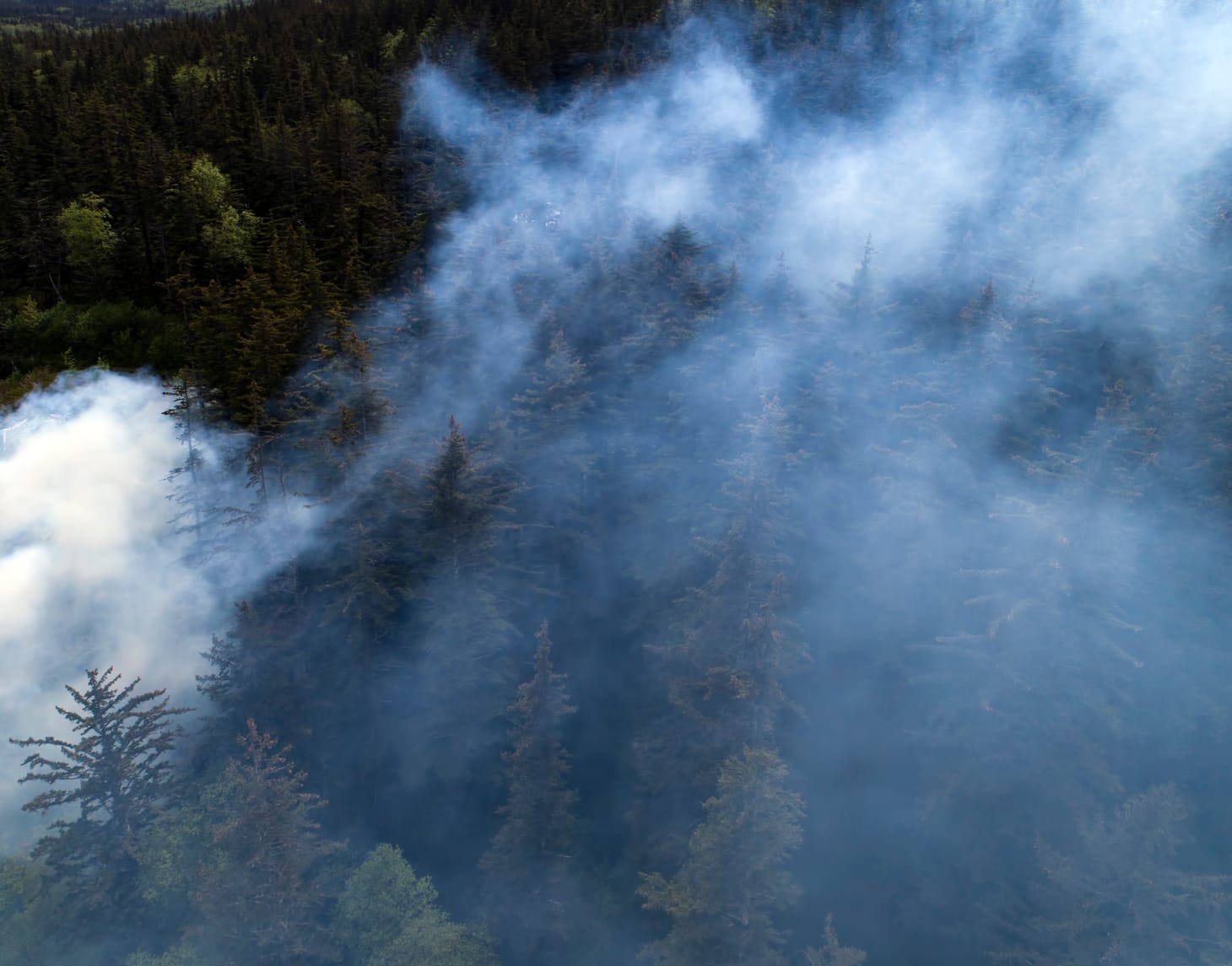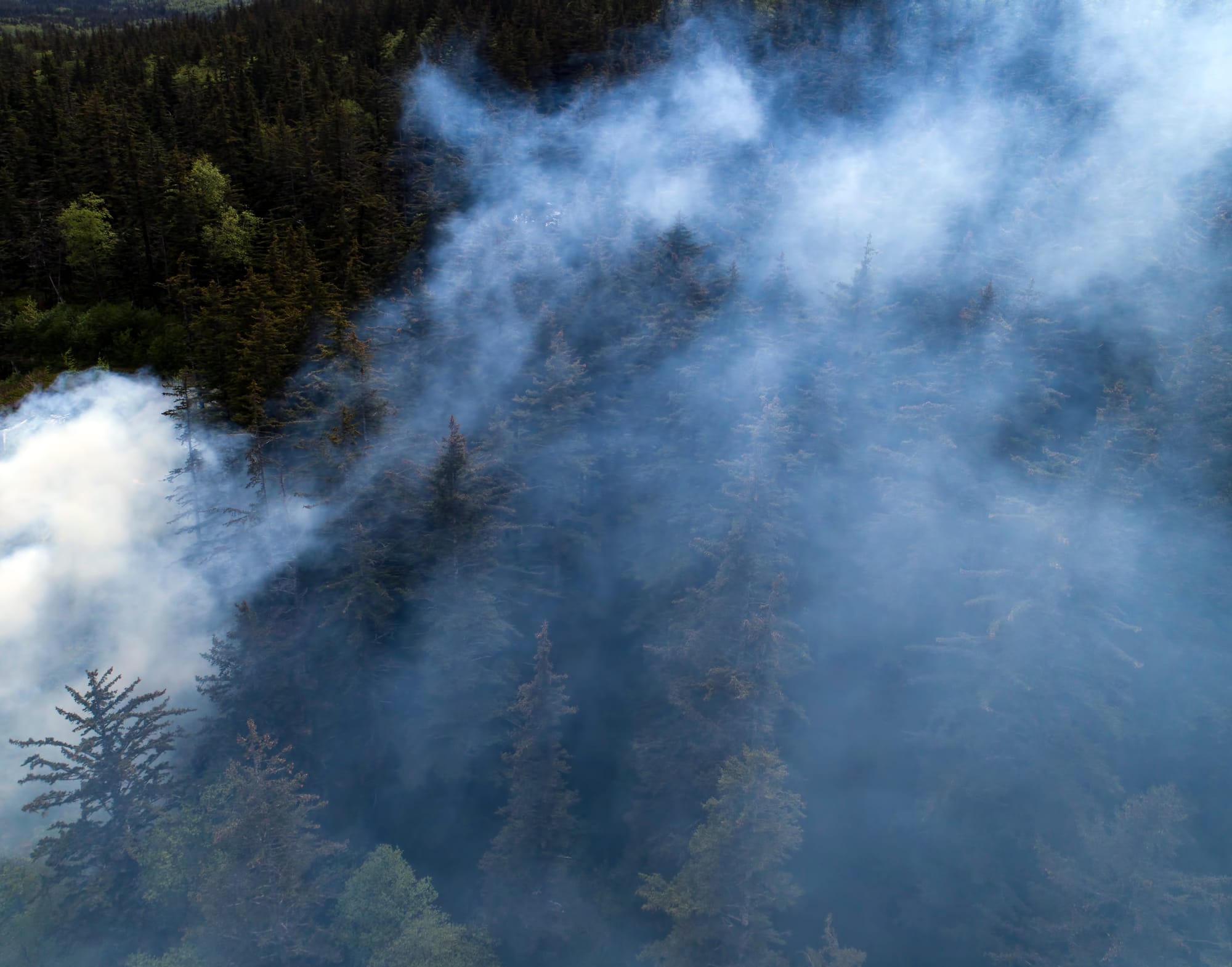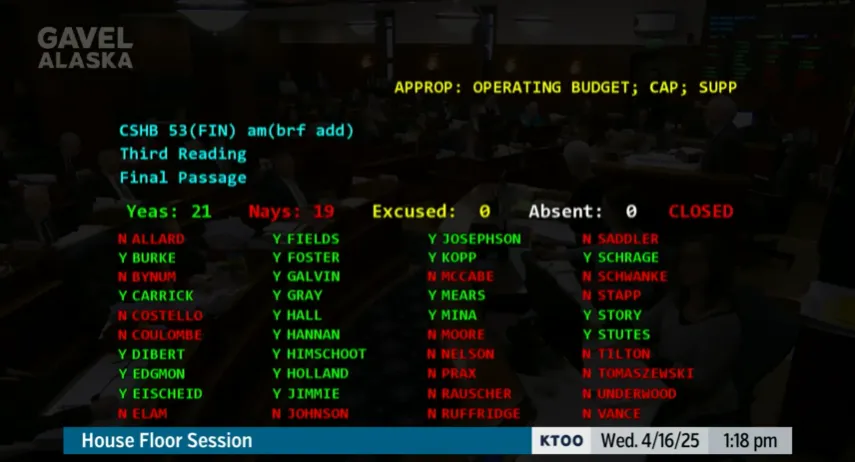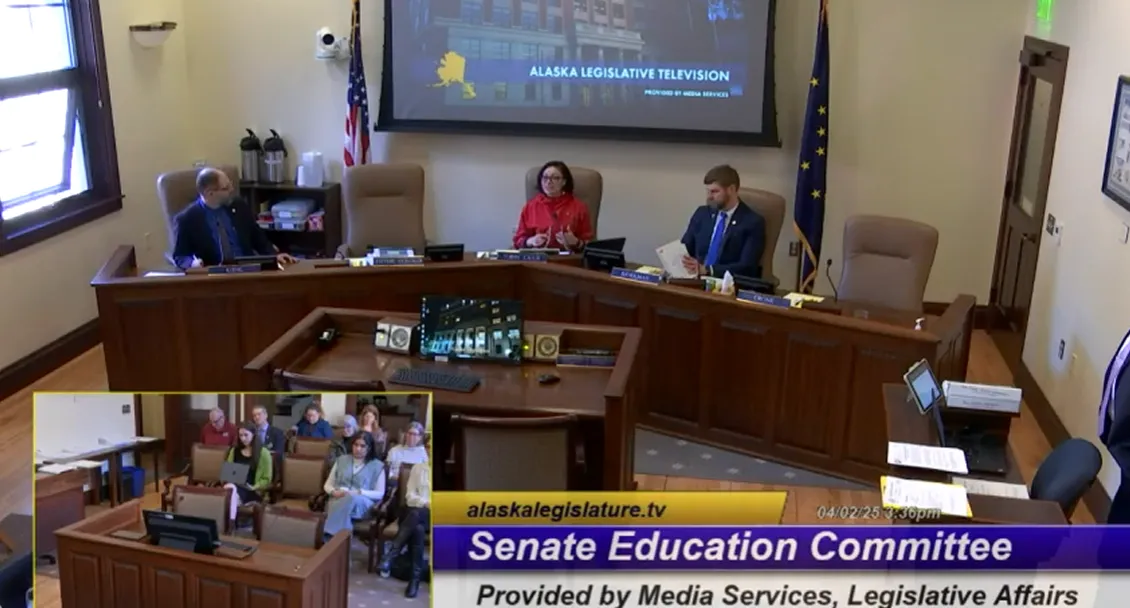As everything falls apart, school funding advances and much-delayed salary study is released
Oh how things can change in 80 days.

It's Thursday, Alaska! It's Day 80.
In this edition: Alright, enough peering into the abyss of acceleratingly bad national news, and let's get back to the acceleratingly bad abyss of state news. Today, the Senate Finance Committee advanced a stripped-down version of the school funding bill in an attempt to force a conversation as the rest of the state's financial outlook is in the gutter amid faltering oil prices and collapsing financial markets. Oh, and Dunleavy – who has been almost entirely absent from the conversation – has already pledged to veto it. Meanwhile, the state has finally released the salary study that was supposed to be out a cool nine months ago and, surprise, the state's broadly underpaying its workers.
Current mood: 😵💫
School funding advances just in time for things to fall apart

"Ladies and gentlemen, we're all in a pickle."
House Speaker Bryce Edgmon, at this week's presser.
What a difference 80 days makes. A session that started with bright hopes of long-awaited action on school funding is running into the hard reality of the tumult and uncertainty of the first 81 days of the Trump presidency. While groups across the state are grappling with the ongoing fallout from federal firings and withheld funding, the state's two main sources of revenue – oil taxes and investment income from the Alaska Permanent Fund – are being taken on a roller coaster ride of Trump's tariffs. Through the end of last week, the fund lost about 2.7% of its value, a roughly $2 billion loss for the fund. Oil prices haven't been pretty, either, and have already dropped well below the spring forecast. The net impact on the state's budget picture won't be immediately clear – because, after all, who knows what will happen tomorrow, let alone next week or next month – but it isn't helping an already difficult picture.
It's with that backdrop that the school funding bill, House Bill 69, advanced from the Senate Finance Committee this morning, the last major hurdle before it will arrive on the Senate floor. In a bit of a twist, it'll be heading there without any of the additional policy changes that the House or Senate Education Committee have approved, such as a school cell phone ban policy or additional testing rules for homeschool students. Instead, the bill's latest version has been stripped down to just a $1,000 increase to baseline per-student funding. It'll equate to a roughly $250 million increase over the status quo funding, or about $78.5 million over the current year's education budget that includes one-time money.
Just where that money will come from is an increasingly tricky question since the state faced a deficit before factoring in additional school funding or other costs. Some legislators have pushed for higher taxes on the oil industry by closing tax loopholes and reducing other credits, but face an uphill battle on that front. Others have also explored the possibility of tapping into the state's limited savings or further reducing the dividend. And Dunleavy-aligned Republicans have generally argued that the financial problems facing schools are overstated, questioning the necessity of increasing school funding even as districts across the state face shuttered schools and the broad elimination of programs.
Senate Finance Committee co-chair Sen. Lyman Hoffman, D-Bethel, has argued that funding and policy should be kept separate since the start of the session. During today's hearing, he said the point is to force the conversation on school funding so they can work toward the final budget.
"What we're dealing with here is the base student allocation, and we're trying to see what level of funding there is not only in the Senate, but in the House and on the third floor," he said, referring to the governor's offices on the third floor of the capitol building. "It's about finance."
While Dunleavy has been largely absent from the debate and negotiations on the budget – a point that one Senate Republican conceded is a problem – he was quick to bash the bill with his best imitation of Trump.
"The Senate's new education bill is a joke!" he said in a post. "This is an obvious attempt to strong arm members of the legislature. This is an NEA teacher union dream! Hundreds of millions of dollars of new spending and no accountability called for."
It's a largely expected response from a governor who has never gotten a good handle on working with the Legislature during his six years in office. By most accounts, the governor has essentially continued to demand he get his way while not really giving anything up in return. At today's news conference, Sen. James Kaufman, a member of the Dunleavy-aligned Republican minority, conceded the governor should be more involved in advocating for his education policy priorities.
"I am calling the governor out," he said. "It's time to be much more engaged."
During the Senate Finance Committee hearing, Kaufman warned the Legislature was "going down the path to failure" by not appeasing the governor. Those policies, such as a targeted funding increase for homeschool students, have gained little traction with the coalition majorities, which have rightly pointed out that an increase to the BSA funding flows out to everyone, including homeschools.
It should be noted that Senate Bill 140, the education bill that Dunleavy vetoed last year and that legislators failed to override by a single vote, contained many of the priorities that Dunleavy Republicans now claim are essential, such as a large and largely unneeded increase for just homeschool students.
What's next
The maneuvering sets up another likely veto showdown with the governor. It puts Republican legislators in an unenviable position to vote against public schools at a time when the funding crisis is only worsening. They'll likely take what they feel are principled stands for policy and the budget, but it'll be little comfort to kids who will face more school closures, larger classes, and eliminated activities throughout the state. After all, you only get to go through fourth grade once.
In the big picture, it likely means that districts are in for another round of less-than-adequate one-time funding that they say has increased uncertainty and contributed to a revolving door of teachers that has contributed to poor test scores.
As is the case with many things that legislators have attempted to make progress on, real change will likely have to wait until a change in the governor's office.
Additional reporting: ADN, Alaska Current, KTUU
Surprise! Alaska state employees are broadly underpaid

More than nine months after it was initially supposed to be complete and just as another public employee union was joining the lawsuit to order its release, the state of Alaska has released a long-overdue wage study comparing salaries for state employees to similar jobs in the private sector and other states' public sectors. While the Dunleavy administration tried to blunt its findings by breaking from the long-standing policy of what makes a salary competitive, it found a big chunk of state employees are underpaid. Going by the long-standing policy that considers the 65th percentile of wages competitive – meaning that they're paid more than 65% of their peers, accounting for the higher cost of living in Alaska – about 57% of state jobs are paid below market rate. If you go by the Dunleavy administration's unilaterally lowered expectations – a 50th percentile salary – then the number of underpaid state employees drops down to 32%, a point that conservative media was more than happy to run with in their proclamations that everything's fine.
But as anyone who's been paying attention to the state's chronic troubles with recruiting and retaining workers would tell you, everything is far from fine.
The state's staffing woes and their knock-on effect of degraded public services in everything from delivering public benefits to low-income Alaska families to plowing roads to approving permits for multimillion-dollar projects have been a major issue of focus in the Legislature. Legislators have been hoping that the study would shine some light on the problems and perhaps be worked into new contracts and the state budget (something complicated by the state's financial woes).
In a prepared statement, Heidi Drygas, the director of the Alaska State Employees Association, said the results were disturbing. She noted that of the most popular jobs in state government – those with more than 100 people working under that title – that a whopping 83% are below market rate.
"This study confirms what we have known for a very long time. Not only are Alaska's state employees the only ones in the nation without a pension, salaries have fallen miserably behind," she said. "It's no wonder so many of our friends, neighbors, and colleagues are leaving the state and public service."
And, of course, it's also hard to overlook that the report has been mired in controversy, sparking tense legislative hearings and a lawsuit by the state employees' unions after the Dunleavy administration approved lengthy delays for additional work. When questioned about the scope of that extra work and the delays, the administration was vague, and an updated contract had key elements redacted when it was released to the public. An unredacted copy of the contract was ultimately obtained and released as part of a lawsuit over the study's release, showing that the Dunleavy administration sought to lower the target for what the state considers competitive, which is reflected in dropping the competitive standard from the 65th percentile to the 50th.
It's not the first time the Dunleavy administration has tried to blunt talk that Alaska's public sector compensation isn't competitive. In the fall of 2023, Dunleavy quashed a report by the Alaska Department of Labor and Workforce Development because it pointed out that Alaska's teacher pay wasn't as competitive as it had once been. The move sparked outrage, calling into question the independence and accuracy of the information.
It was ultimately released with a different headline.
Still, the reputational damage had been done, and the effort ultimately brought more attention and scrutiny to the report than had it been released without the controversy (though it still really hasn't translated into meaningful change).
As was the case with that report, it's not clear what, if any, editing the state did to the latest wage report. At a hearing earlier this session, officials defended their continual delays of the study and indicated that they planned to make changes once the contractor delivered the final draft.
Drygas said in a statement that the union plans to continue its lawsuit against the state to force the release of drafts of the report to get to the bottom of what really happened with the report and whether its results paint an accurate picture of how employees are paid.
"While the release of the study is a step in the right direction, our lawsuit is still very much alive," Drygas said in a statement, according to the ADN. "It's essential the State release all drafts of the study, as required by statute, for full public transparency."
Stay tuned.
The Alaska Memo Newsletter
Join the newsletter to receive the latest updates in your inbox.



